Unlocking the Power of the 470 Ohm Resistor: A Comprehensive Guide
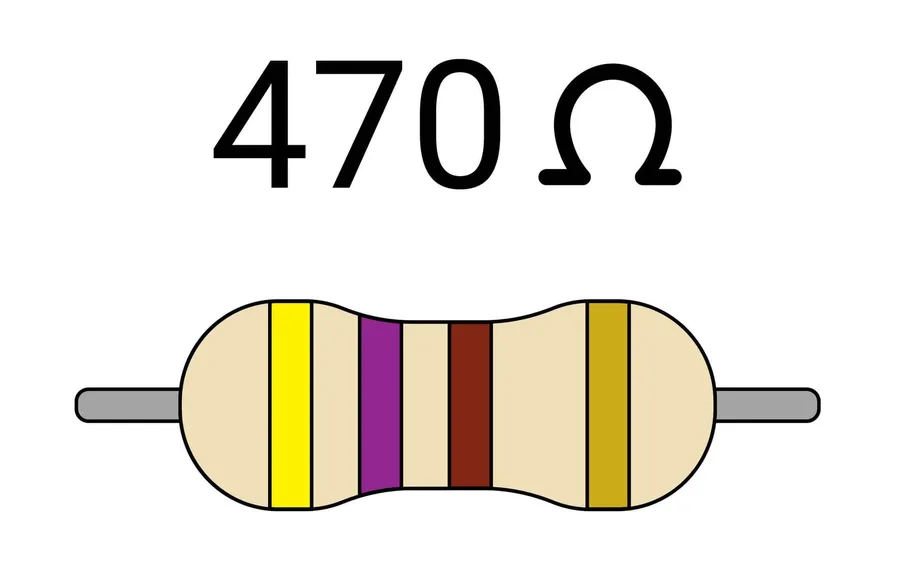
In the realm of electronics, where precision and control reign supreme, the humble 470 ohm resistor stands as a silent workhorse. Like a well-placed traffic light directing the flow of electrical current, it ensures circuits operate as designed. Whether you are crafting a new audio amplifier or building a robotics project, the 470 ohm resistor will be found. This guide will delve into the intricacies of this essential component, examining its role in circuits, identifying it with its color codes, and much more, all explained with clear concise language that even a novice can understand.
What is a 470 Ohm Resistor?

A 470 ohm resistor is a fundamental passive electronic component that impedes the flow of electrical current by providing a specific resistance of 470 ohms. This precisely controlled resistance is crucial for managing current and voltage within electrical circuits. Its function is to limit current, generate a voltage drop, and control the intensity of signals within electronic systems.
470 Ohm Resistor Color Code: Decoding the Bands
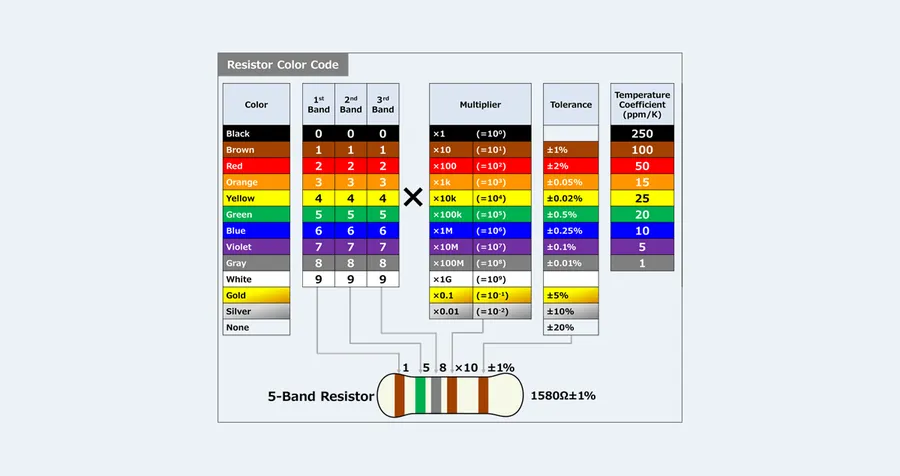
The 470 ohm resistor, like most axial lead resistors, utilizes a color-coding system to denote its resistance value and tolerance. This system employs a series of colored bands, each representing a numerical digit, a multiplier, or a tolerance percentage. Understanding this color code is crucial for identifying the resistor's value without needing to use a multimeter.
| Band Number | Color | Digit Value | Multiplier | Tolerance (%) |
|---|---|---|---|---|
| 1st Band | Yellow | 4 | ||
| 2nd Band | Violet | 7 | ||
| 3rd Band | Brown | x10 | ||
| 4th Band | Gold | 5 | ||
| 4th Band | Silver | 10 | ||
| 4th Band | None | 20 |
For a 470 ohm resistor, the color bands are typically: Yellow, Violet, Brown and Gold or Silver. The first two bands (Yellow and Violet) represent the significant digits of the resistance, which are 4 and 7, respectively, forming 47. The third band (Brown) acts as a multiplier, indicating a factor of 10, effectively multiplying 47 by 10 to give us 470 ohms. The fourth band indicates the tolerance, gold indicating 5% and silver indicating 10%. Therefore, a 470 ohm resistor will have a color code of yellow-violet-brown-gold or yellow-violet-brown-silver.
470 Ohm Resistor Applications

The 470 ohm resistor, a fundamental passive electronic component, finds widespread use across diverse applications, primarily functioning to control current flow, divide voltage, and manipulate signal levels. Its consistent performance in both direct current (DC) and alternating current (AC) circuits makes it a versatile choice for circuit designers and engineers.
- Current Limiting
A primary role of the 470 ohm resistor is to limit current in a circuit. When placed in series with a component, it restricts the amount of current that can flow, preventing damage to sensitive components like LEDs or transistors. The relationship is governed by Ohm's Law (V=IR), where increasing resistance decreases the current at constant voltage. - Voltage Division
When two or more resistors are placed in series, they create a voltage divider. The 470 ohm resistor can be part of such a network to scale down a voltage to a desired level. This principle is often employed in sensor circuits or when a lower voltage is needed to operate a specific component. The voltage division can be calculated using the formula: Vout = Vin * (R2 / (R1 + R2)), where R1 and R2 form a series resistor combination. - Signal Manipulation
In AC circuits, the 470 ohm resistor can be used to adjust signal strength or filter certain frequencies. They often find their use in audio processing circuits, and in feedback loops of amplifiers to control gain. The impedance of 470 ohms can influence the behavior of signal paths, enabling precise control over circuit behavior. Often used in conjunction with capacitors and inductors in analog filter circuits. - Pull-Up and Pull-Down Resistors
In digital circuits, a 470 ohm resistor can be used as a pull-up or pull-down resistor. In these cases the resistor ensures a defined logic state for an input when no signal is present. This prevents floating inputs which can lead to unpredictable behaviour.
Types of 470 Ohm Resistors
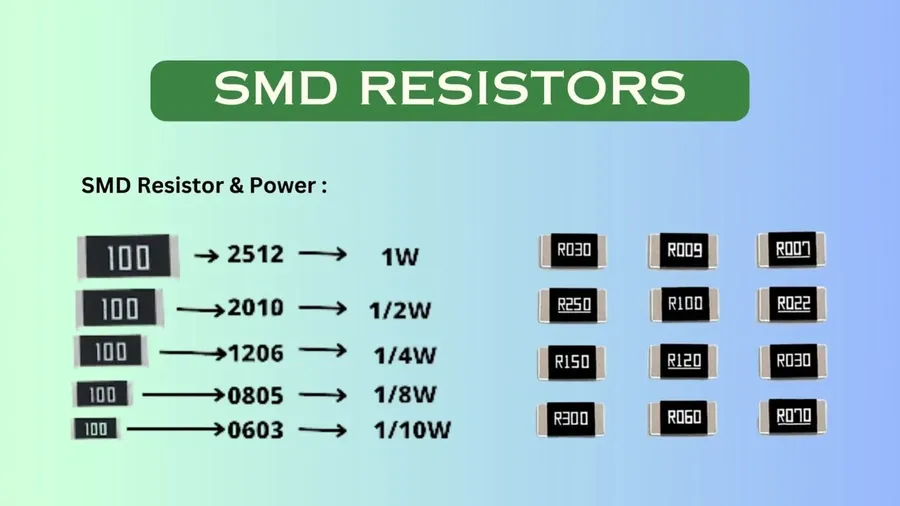
470 ohm resistors are available in several types, each with distinct characteristics that make them suitable for different applications. The primary types include metal film, carbon film, and surface mount (SMD) resistors, each constructed with varying materials and methods.
| Type | Construction | Advantages | Disadvantages | Typical Applications |
|---|---|---|---|---|
| Metal Film | Thin layer of metal alloy deposited on a ceramic substrate. | High precision, low noise, good temperature stability, and tight tolerance. | Generally more expensive than carbon film resistors. | Precision circuits, audio equipment, high-accuracy measurement tools. |
| Carbon Film | Thin layer of carbon film deposited on a ceramic substrate. | Low cost, good for general-purpose applications. | Higher noise, lower precision, and less temperature stability than metal film resistors. | General electronic circuits, basic DIY projects, non-critical timing circuits. |
| Surface Mount (SMD) | Small rectangular chip with conductive pads for surface mounting. | Small size, automated assembly, good for high-density circuits. | Requires specific soldering equipment, may be difficult to handle manually, sensitive to mechanical stress. | Modern electronic devices, mobile phones, laptops, and compact circuit boards. |
Selecting the appropriate type of 470 ohm resistor is crucial for circuit performance. Metal film resistors are ideal when precision and stability are paramount, while carbon film resistors provide a cost-effective solution for less demanding applications. SMD resistors are essential for high-density and automated manufacturing processes, albeit requiring specialized handling and soldering.
470 Ohm Resistor vs. Other Resistor Values
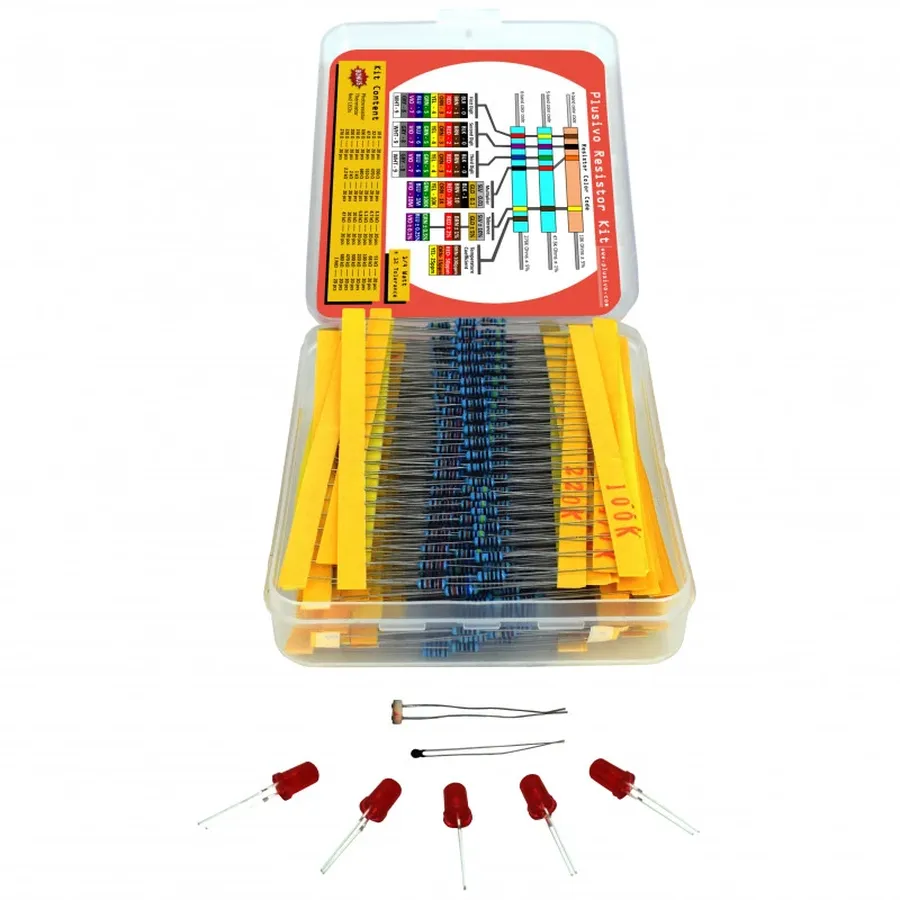
The selection of a resistor value is a critical aspect of circuit design. While a 470 ohm resistor finds common usage in various applications, understanding its relation to other values and how they impact circuit behavior is essential. Different resistance values result in varying current and voltage characteristics and affect the overall performance of the circuit. This section delves into how the 470-ohm resistor compares with other common values, detailing the considerations for choosing the right resistance value for specific applications.
| Resistor Value | Typical Application | Current Limiting | Voltage Division | Effect on Circuit |
|---|---|---|---|---|
| 100 Ohm | LED current limiting, low impedance circuits | High | Low | Higher current, lower voltage drop |
| 220 Ohm | LED current limiting, general purpose circuits | Medium-High | Medium-Low | Medium-High current, medium-low voltage drop |
| 470 Ohm | General purpose current limiting, pull-up/pull-down | Medium | Medium | Balanced current and voltage drop |
| 1k Ohm | Base resistors for transistors, weak pull-up/down | Medium-Low | Medium-High | Lower current, higher voltage drop |
| 10k Ohm | Pull-up/pull-down resistors, high impedance circuits | Low | High | Very low current, high voltage drop |
When choosing a resistor, especially comparing a 470 ohm resistor to other values, it's important to understand the trade-offs. A lower resistance value like 100 ohms allows more current to flow, which can be necessary in certain situations, but may also lead to higher power dissipation. Conversely, a higher value like 10k ohms will limit the current more significantly, making it suitable for applications where low current consumption is critical, such as in high-impedance circuits. The 470 ohm resistor offers a balance between current and voltage drop, making it versatile for general purpose applications. The specific needs of a project, including the desired current flow, voltage levels, and power consumption, should dictate the most suitable resistance value.
Frequently Asked Questions About 470 Ohm Resistors
This section addresses common questions regarding 470 ohm resistors, providing clear, concise answers to enhance understanding for users of all experience levels. The goal is to clarify any misconceptions and offer practical insights into the functionality and application of these essential electronic components.
- What does a 470 ohm resistor do in a circuit?
A 470 ohm resistor opposes the flow of electric current, limiting the current in the circuit. It's primarily used to control current, reduce voltage, or create a specific voltage drop, facilitating proper circuit behavior and preventing damage to other components. - What is the color code for a 470 ohm resistor?
The color bands for a 470 ohm resistor are typically: Yellow (4), Violet (7), Brown (1 multiplier of 10^1, meaning no extra zeros), and a Gold or Silver (5% or 10% tolerance respectively, or another color band). This configuration indicates a resistance value of 470 ohms ± tolerance. - What does '470e resistor' mean?
The 'e' in '470e' is sometimes used as a replacement for the Greek letter ohm (Ω), as a substitute in text where Greek letters may not be readily available or understood. Hence, 470e simply means a 470 ohm resistor. - How does a 470 ohm resistor compare to a 4.7k ohm resistor?
A 470 ohm resistor has a significantly lower resistance than a 4.7k (4700 ohm) resistor. This means the 470 ohm resistor will allow more current to flow through the circuit while the 4.7k will allow less. The choice between them depends on the specific current limiting or voltage division requirements of the circuit design. - Can a 470 ohm resistor be used in AC circuits?
Yes, a 470 ohm resistor can be used in both DC and AC circuits. The resistor's primary function of limiting current is effective regardless of the polarity changes inherent in AC circuits. However, the power rating and type of resistor must be appropriate for the frequency and power levels involved in AC circuit applications. - How do I select the right power rating for a 470 ohm resistor?
The power rating of a 470 ohm resistor should be selected based on the expected power dissipation in the circuit. If the 470 ohm resistor is anticipated to dissipate a significant amount of power, choose a resistor with a higher power rating (e.g., 1W or 2W) than the calculated value. Underestimation leads to overheating and potentially failure, while overestimation can be wasteful in cost and board space. - What are the common failure modes of a 470 ohm resistor?
The primary failure modes of a 470 ohm resistor include: overheating due to excessive current, resulting in an open circuit, physical damage due to mishandling, excessive mechanical forces or moisture and lead fatigue or solder joint failure. Proper handling, design and component selection greatly mitigate these failure modes.
Power Rating and Tolerance of the 470 Ohm Resistor
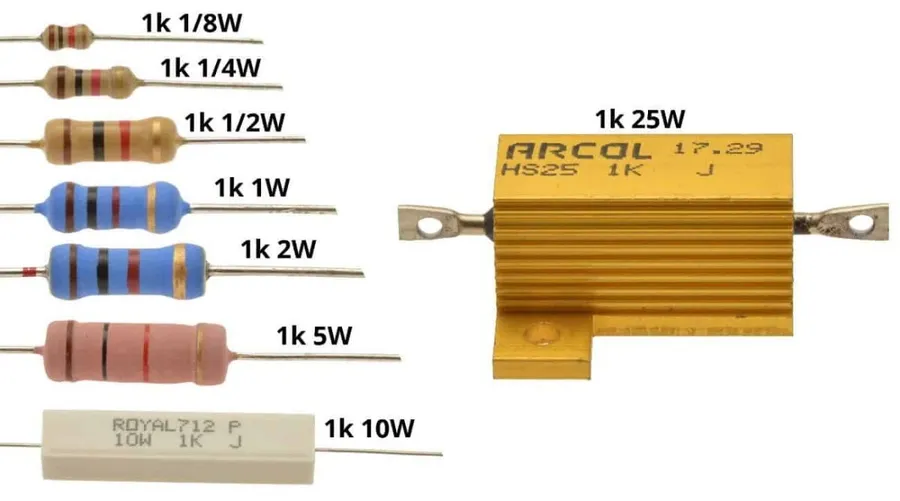
Selecting the appropriate 470 ohm resistor for a circuit requires careful consideration of both its power rating and tolerance. These specifications are crucial for ensuring the resistor operates reliably and does not fail prematurely, maintaining circuit integrity and preventing potential damage.
Power rating indicates the maximum power a resistor can safely dissipate as heat without being damaged. This value is measured in watts (W) and is directly linked to the resistor's physical size and construction. Exceeding the power rating can lead to overheating, causing the resistor to fail. Common power ratings for 470 ohm resistors include 1/4W, 1/2W, 1W, and 2W. The selection of power rating should be based on the calculated power dissipation in the circuit, ensuring the selected resistor has an equal or higher power rating than the expected consumption.
Tolerance, on the other hand, represents the maximum permissible deviation of the actual resistance value from the nominal 470 ohms. It is expressed as a percentage (e.g., ±1%, ±5%, ±10%). Lower tolerance values indicate higher precision. A 470 ohm resistor with a ±5% tolerance, for example, can have an actual resistance between 446.5 and 493.5 ohms. The choice of tolerance depends on the precision needed for the specific application, where tighter tolerance is preferable in circuits with sensitive parameters.
| Parameter | Description | Significance |
|---|---|---|
| Power Rating | Maximum power the resistor can dissipate as heat without damage, measured in watts (W). | Ensures the resistor operates within safe thermal limits, preventing overheating and failure. |
| Tolerance | Permissible deviation of the actual resistance from the nominal value, expressed as a percentage (%). | Affects the accuracy of circuit performance; lower tolerance indicates higher precision. |
Failing to consider these two critical parameters can lead to a resistor operating outside of its specifications. This can result in a number of problems, such as resistor failure, circuit malfunction, and even damage to other components. Correctly evaluating power and tolerance requirements during the design phase is therefore paramount for circuit reliability and performance.
Practical Guide: Choosing and Using a 470 Ohm Resistor
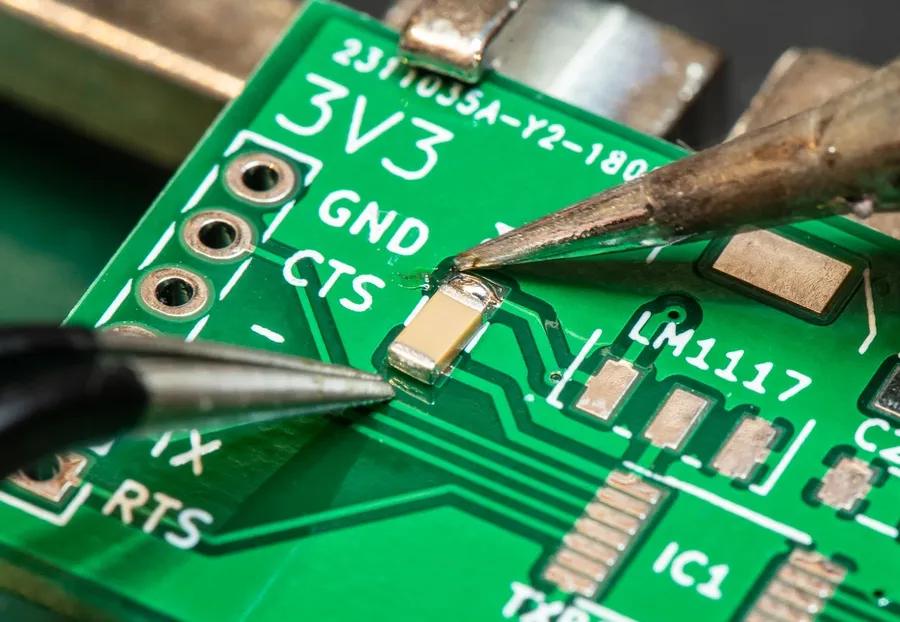
Selecting and using a 470 ohm resistor correctly is crucial for optimal circuit performance and reliability. This section provides a practical guide, focusing on key considerations for choosing the right resistor and employing it effectively in your projects.
- Factors to Consider When Choosing a 470 Ohm Resistor
Several factors should influence your choice of a 470 ohm resistor. These include the resistor's physical size, its type (e.g., metal film, carbon film, SMD), power rating, and tolerance. Each parameter affects the performance and suitability of the resistor for the application. For example, SMD resistors are suitable for compact designs, while higher power ratings are needed for circuits with high current demands. - Size and Form Factor
The physical size of a resistor is primarily determined by its power rating. Larger resistors can dissipate more heat, which is important for high-current circuits, whereas smaller sizes, particularly SMD (Surface Mount Devices), are preferred in compact, high-density electronics. Choosing the right size depends on spatial constraints and the circuit’s power needs. - Resistor Type: Metal Film, Carbon Film, and SMD
Metal film resistors are known for their high precision and low temperature coefficient, making them a preferred choice for accurate circuits. Carbon film resistors, while less precise, are cost-effective for general-purpose applications. SMD resistors, in various case sizes, are chosen for automated assembly in electronic devices. The type selected will impact precision, temperature stability, and cost. - Power Rating
The power rating, measured in watts (W), indicates the amount of power a resistor can dissipate safely without failing. It's critical to choose a power rating that is greater than the calculated power the resistor will need to handle. Overloading a resistor can lead to overheating and premature failure. Common ratings include 1/4W, 1/2W, 1W and 2W for through-hole devices and 1/16W and 1/10W for most SMD devices. Always err on the side of higher power handling when selecting the rating. - Tolerance
Tolerance reflects the deviation of the actual resistance value from its nominal value, expressed as a percentage (e.g., ±1%, ±5%). For precise applications, low-tolerance resistors are needed, whereas for general purposes, a higher tolerance is often acceptable. Higher tolerance resistors are cheaper, but lower tolerance resistors will ensure greater circuit performance predictability. Always review if the component tolerance affects the overall precision requirements of the system. - Installation Tips
Proper installation is critical. Through-hole resistors should be properly mounted and the leads should not put excessive mechanical stress on the resistor body, especially during bending or insertion into a PCB, as this can induce cracks and performance issues in the device. SMD resistors must be soldered correctly onto the designated pads with an even application of heat. Always check solder joints to ensure proper conductivity, without any shorts or opens. - Avoiding Common Mistakes
A common error is selecting a resistor with inadequate power rating. Another common mistake is not considering the operational temperature, which can affect a resistors performance and lifetime. Always double check the design requirements to avoid premature component failure, especially in high-stress applications.
Troubleshooting Issues with 470 Ohm Resistors
470 Ohm resistors, while generally reliable, can encounter issues that affect circuit performance. Diagnosing these problems involves understanding typical failure modes and employing appropriate troubleshooting techniques to ensure the integrity of electronic designs.
Here's a breakdown of common issues and their resolutions:
- Overheating
Overheating occurs when a resistor dissipates more power than it is rated for, leading to a temperature increase, which can alter its resistance value or cause permanent damage. This can be identified by discoloration, a burnt smell, or physical deformation of the resistor. Check if the power rating of the resistor is suitable for the current flowing through it. If overheating is evident, replace the resistor with one having a higher power rating or reduce the current flow using other circuit components. Ensure adequate ventilation to prevent heat buildup around the resistor and adjacent components. - Open Circuit
An open circuit happens when the conductive path of the resistor is broken, usually due to physical damage or internal failure from excessive heat or voltage. This can be identified using a multimeter by observing an infinite resistance reading across the resistor's leads, indicating a break in continuity. When an open circuit is detected, a replacement with the same or an equivalent 470 Ohm resistor is necessary. Examine the solder joints and leads for signs of physical damage, and ensure the new component is correctly installed. - Incorrect Resistance Value
The resistance of a 470 Ohm resistor may drift from its specified value over time, especially in harsh environmental conditions. Checking the resistance with a multimeter can identify such shifts. A reading that deviates significantly from 470 ohms indicates the resistor's need to be replaced. Use a digital multimeter to verify its resistance. When replacing, make sure the new resistor has the correct tolerance specified by the project requirements. - Physical Damage
Physical damage includes cracked ceramic bodies, broken leads, and loose solder joints. Such damage may lead to open circuits or unreliable connections. Visual inspection under magnification and a continuity test using a multimeter can identify these issues. Solder joints should have a smooth, shiny appearance. Replace any damaged resistors and ensure proper solder joint quality. - Incorrect installation
Incorrect installation of the resistor can cause issues, leading to poor connections or damage from improper soldering. Ensure correct polarity and avoid any stress on the component leads during installation. Review the installation process using a schematic to verify the placement of the resistor. Take care not to apply excessive heat during soldering to avoid damaging the component. Ensure solder joints are clean and well-formed for a reliable connection.
In the grand scheme of electronics, the 470 ohm resistor may seem small, but its impact is profound. From controlling current in a basic LED circuit to stabilizing complex audio systems, this component is an unsung hero of the modern world. Understanding its color code, applications, and characteristics empowers makers and engineers alike. As technology advances, the role of the 470 ohm resistor will remain crucial in the design of both simple and complex circuitry, ensuring that electrons flow where we need them, when we need them. So next time you see a 470 ohm resistor, give it a nod; it's more than meets the eye.
 AnyPCBA
AnyPCBA